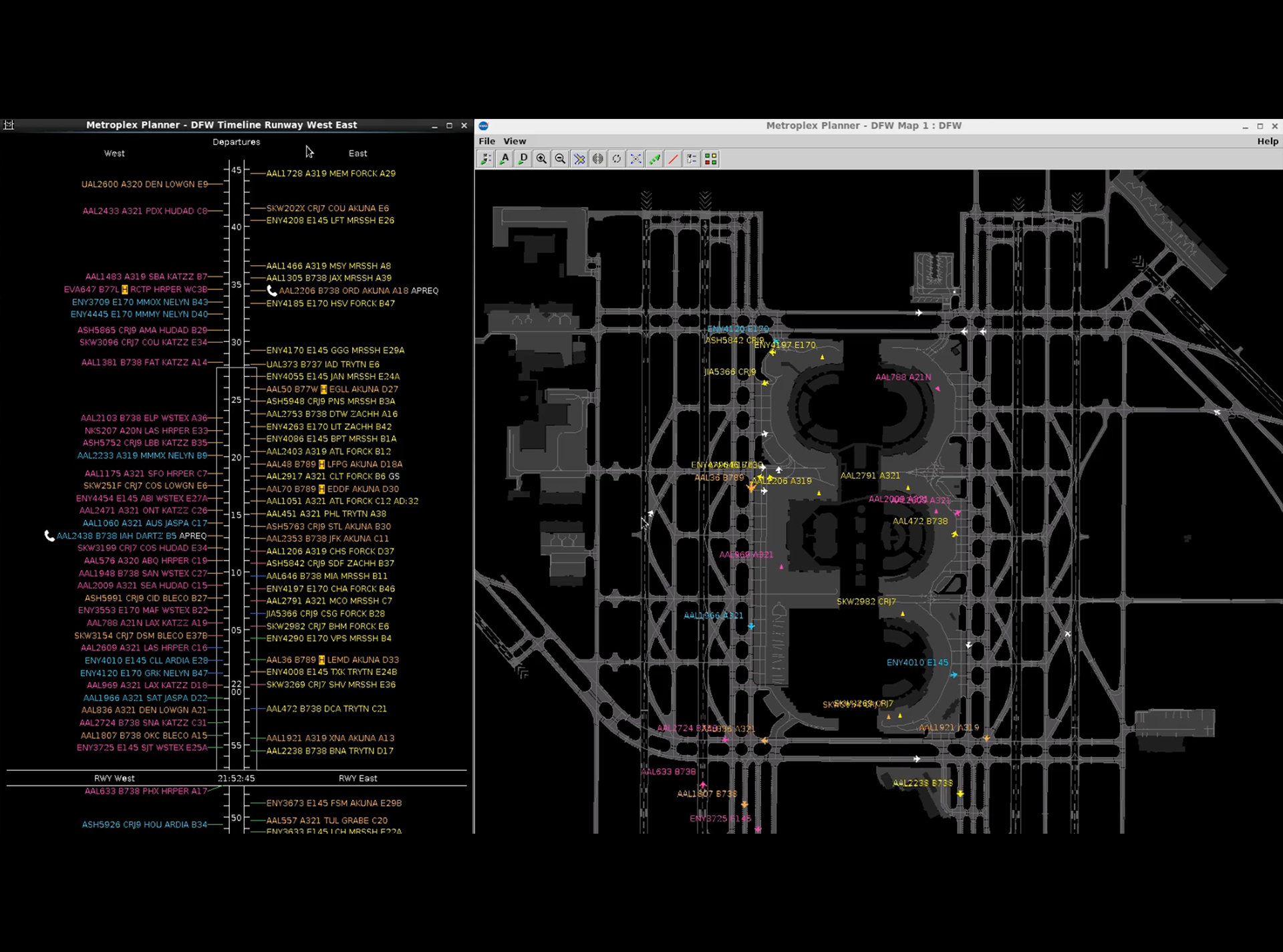
As part of an effort aimed at making aviation more sustainable, NASA has transferred findings from an air traffic management project to the Federal Aviation Administration (FAA) for nationwide implementation, the two agencies announced at a media briefing Tuesday.
Over the past six years, NASA’s Airspace Technology Demonstration 2 (ATD-2) project demonstrated the benefits of a suite of airport operations tools known as Integrated Arrival, Departure, and Surface (IADS) technology. The tools, tested at Charlotte Douglas International Airport in North Carolina, and at Dallas Fort Worth International Airport and Dallas Love Field Airport in Texas, saved fuel, reduced carbon emissions, and increased information sharing between the FAA and industry. NASA provided the FAA with technology and knowledge from the demonstrations.
NASA Administrator Bill Nelson, FAA Administrator Stephen Dickson, and several representatives from partner airports and airlines highlighted the agencies’ ongoing work that contributes to the Biden-Harris Administration’s goal to address climate change.
“NASA is developing transformative technologies that will revolutionize the aviation sector as we know it. The proof is in the pudding. This air traffic scheduling technology enhances aircraft efficiency and improves dependability for passengers every day,” Nelson said. “I’m excited the software NASA developed for air traffic controllers and airlines will be soon rolled out at airports across the country and know the results will continue to be extraordinary.”
ATD-2 set out to improve the predictability and operational efficiency of the air traffic systems in areas with multiple airports. The IADS capabilities developed and demonstrated under ATD-2 achieved this goal, demonstrating benefits that include fuel savings, emissions reductions, and time savings for airlines and the flying public.
By minimizing taxi delay and ramp congestion, ATD-2 demonstrated a reduction in fuel burn and carbon dioxide emissions and supports the administration’s goal to build a sustainable aviation system. During testing at Charlotte Douglas International Airport, the program reduced taxi times, helping save more than 275,000 gallons of fuel annually – enough to fly 185 Boeing 737 aircraft between New York and Chicago. The program also reduced greenhouse gas emissions by 8 tons of carbon dioxide daily and reduced delays by 916 hours over four years, equivalent to an average of 15 minutes of wait time on a taxiway for more than 3,600 departing flights.
“The future of flight must be more sustainable and environmentally friendly,” said Dickson. “This new capability as part of a flight merging system has a double benefit: It reduces aircraft emissions while, at the same time, air travelers experience more on-time departures.”
The FAA plans to implement IADS capabilities via a new program called Terminal Flight Data Manager (TFDM), which it will deploy to 89 airports, beginning next year with deployment at Phoenix Sky Harbor International Airport. More advanced IADS capabilities demonstrated under ATD-2 will go to 27 of the nation’s busiest airports under TFDM.
NASA’s Airspace Technology Demonstration portfolio included two other projects that have since ended. ATD-1 featured new ground-based and flight deck technologies that enable use of fuel-efficient procedures throughout the entire arrival phase of flight. These technologies are now in the final stages of implementation by the FAA and Industry. ATD-3 focused on providing pilots and air traffic managers with options for adjusting aircraft flight paths based on real-time input including wind and weather conditions and other air traffic.
For more information about NASA’s aeronautics research, visit:
-end-
J.D. Harrington
Headquarters, Washington
202-358-5241
j.d.harrington@nasa.gov
Tony Molinaro
FAA, Chicago
847-294-7427
Tony.Molinaro@faa.gov




























